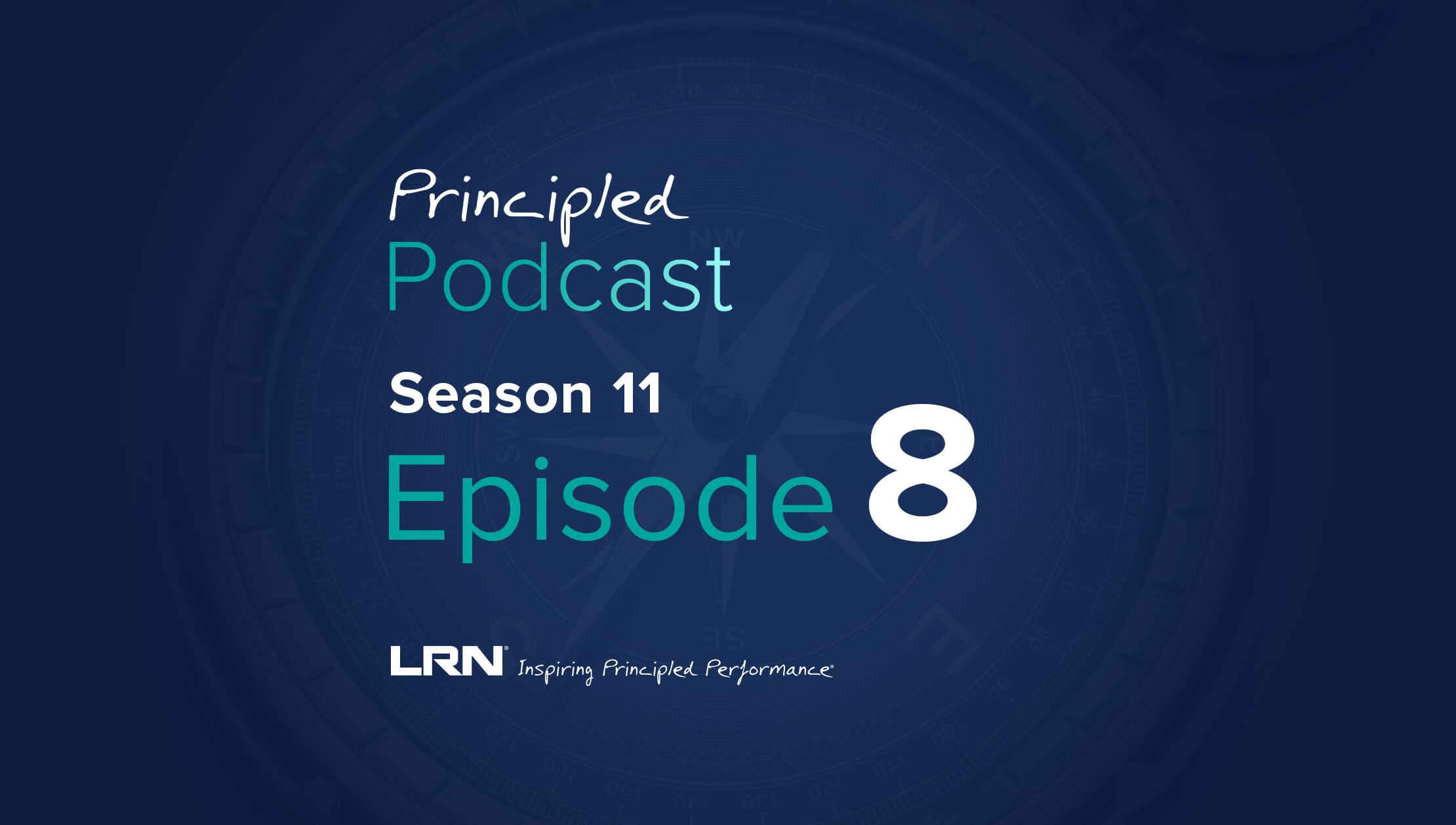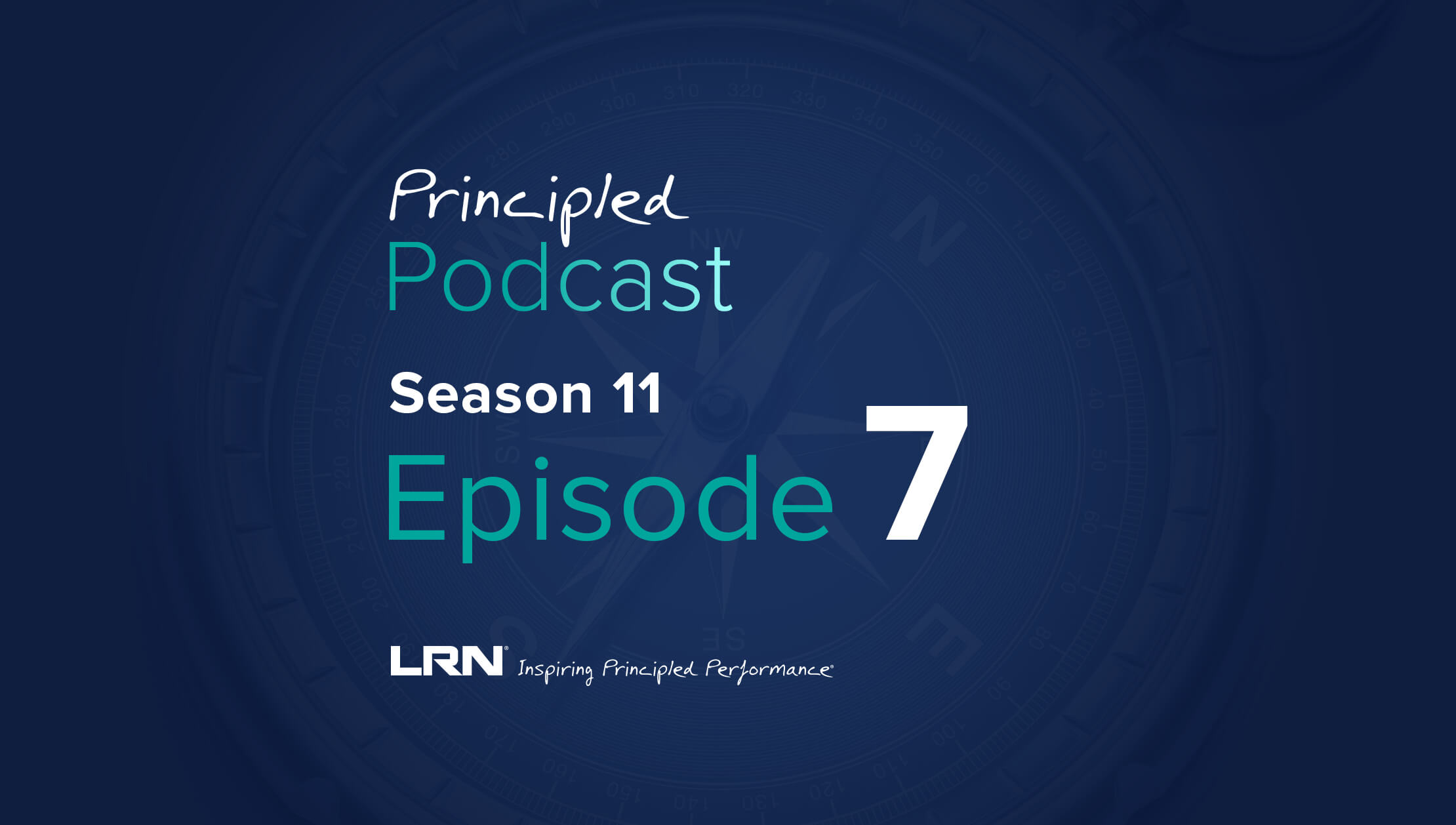Building effective ethics and compliance training goes beyond metrics like course completions. One of the greatest challenges facing E&C teams is figuring out how to continually engage their learners—not only to help them remember material but also to encourage them to apply their learning. The new LRN e-book, How to create engaging E&C training, asks experts from our Advisory Services and Client Success teams to share insights around what makes training interesting and applicable to learners. We went also went straight to the source: learners themselves.
LRN sat down with people who work in a variety of industries and have taken various ethics and compliance training in their careers. We asked each learner what engaging E&C training even looks like. Here are the four action items they described.
Keep courses short and succinct.
Experts in our e-book recommend that courses err on the side of being minimal and snappy to both capture and retain people’s attention.
When asked what makes certain E&C training engaging for them, many learners cited time as a key component to good course instruction:
- “Short, sharp, and to the point. If only all training modules were as clear and easy to understand!”
- “It was crisp and to the point, bearing in mind our core values and how important our work environment is where we spend most of our waking hours of a day.”
- “I appreciate this...was direct, short and to the point, using common sense scenarios.”
- “I like the modular aspect of it. It was very considerate and made it into small, manageable, bite-size sessions.”
- “This is one of the best company's policies I have ever gone through. Short and precise. Will definitely abide with the policies.”
Accommodate different learning styles by including visual and aural formats.
According to research around learning styles, roughly 65% of the general population are visual learners, while another 30% are auditory learners. Adapting information into video and audio formats can boost the interactivity of your course material and ensure you reach every learner.
In speaking with learners about course formats, they told us:
- “I loved that there is an audio option. It definitely made the course feel more engaging.”
- “Loved the video conversations, they really were impactful.”
- “I really liked the video scenarios, it helps to bring home the learning experience for visual learners.”
- “I greatly appreciate that you used video and audio to be a more effective media.”
- “I think this course was well planned. I like the audio as the option because it's easier to grasp the situations. Very well done!”
Illustrate ethics and compliance concepts with realistic, everyday situations.
A lot has been written about the benefits of scenario-based learning, where people are tasked to apply what they’ve learned to a situation they realistically could find themselves in. Using real-life scenarios to illustrate key ethics and compliance concepts can help make technical information feel more accessible and relatable.
Here’s what we heard from learners:
- “Well done. The training had great real-world scenarios that we may actually encounter, rather than far-fetched examples we'll never see in the workplace.”
- "Using real life examples was very helpful and kept me engaged till the end of the course.”
- “I think the training materials were well thought out and carefully created using real life examples to ensure the complexity of identifying and preventing sexual harassment in the workplace was relayed appropriately. I thought the course was excellent.”
- “Very well made presentation, that came 'alive' with concrete and well thought through realistic scenarios, that sent a clear message in an easy to understand format.”
Communicate how E&C concepts directly tie to individual roles and responsibilities.
While learners do appreciate seeing more real-world scenarios, it’s important to clearly communicate how course material ties back to their job—even if it’s as simple as saving them time. As our e-book explains, you can't assume that people will understand how each topic relates to their day-to-day work, so it’s better to spell out how the information benefits them. If training doesn’t make that direct connection, people will be less motivated to engage.
Learners told us that a point of frustration they have with E&C training is a lack of direct application:
- “I'm finding difficulties with the content and how it applies to my job.”
- “The reason I say it’s not useful information is due to the fact that I don't personally handle PII in my job functions.”
- “Didn't feel this applies to what my job is.”
- “Course has nothing to do with my daily job.”
The key takeaway
While you may not hear many of your fellow employees talking excitedly about completing their ethics and compliance training right now, you can still develop training that engages learners and inspires them to do the right thing. Get a free copy of our new e-book for additional guidance from our experts in Advisory Services and Client Success about how to create engaging E&C training.



